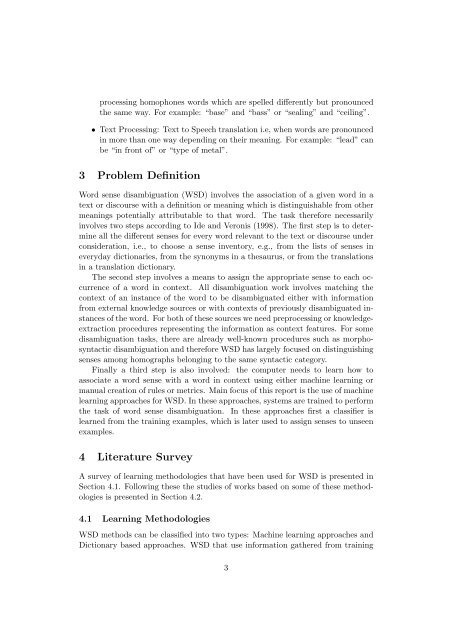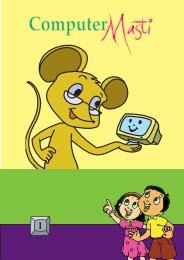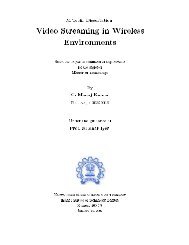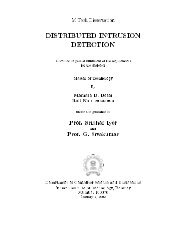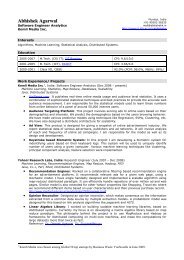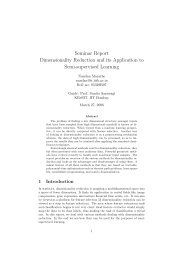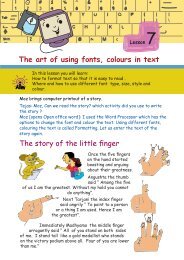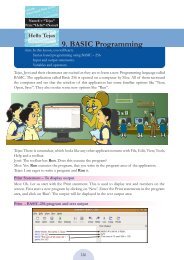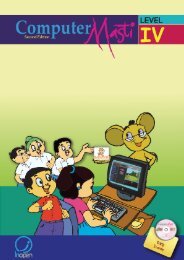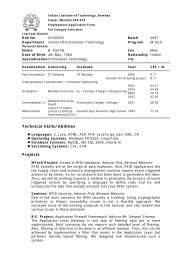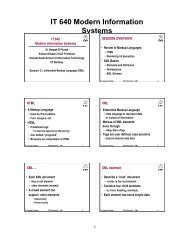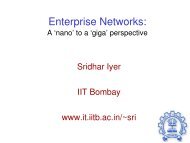Word Sense Disambiguation - cs547pa1
Word Sense Disambiguation - cs547pa1
Word Sense Disambiguation - cs547pa1
Create successful ePaper yourself
Turn your PDF publications into a flip-book with our unique Google optimized e-Paper software.
processing homophones words which are spelled differently but pronounced<br />
the same way. For example: “base” and “bass” or “sealing” and “ceiling”.<br />
• Text Processing: Text to Speech translation i.e, when words are pronounced<br />
in more than one way depending on their meaning. For example: “lead” can<br />
be “in front of” or “type of metal”.<br />
3 Problem Definition<br />
<strong>Word</strong> sense disambiguation (WSD) involves the association of a given word in a<br />
text or discourse with a definition or meaning which is distinguishable from other<br />
meanings potentially attributable to that word. The task therefore necessarily<br />
involves two steps according to Ide and Veronis (1998). The first step is to determine<br />
all the different senses for every word relevant to the text or discourse under<br />
consideration, i.e., to choose a sense inventory, e.g., from the lists of senses in<br />
everyday dictionaries, from the synonyms in a thesaurus, or from the translations<br />
in a translation dictionary.<br />
The second step involves a means to assign the appropriate sense to each occurrence<br />
of a word in context. All disambiguation work involves matching the<br />
context of an instance of the word to be disambiguated either with information<br />
from external knowledge sources or with contexts of previously disambiguated instances<br />
of the word. For both of these sources we need preprocessing or knowledgeextraction<br />
procedures representing the information as context features. For some<br />
disambiguation tasks, there are already well-known procedures such as morphosyntactic<br />
disambiguation and therefore WSD has largely focused on distinguishing<br />
senses among homographs belonging to the same syntactic category.<br />
Finally a third step is also involved: the computer needs to learn how to<br />
associate a word sense with a word in context using either machine learning or<br />
manual creation of rules or metrics. Main focus of this report is the use of machine<br />
learning approaches for WSD. In these approaches, systems are trained to perform<br />
the task of word sense disambiguation. In these approaches first a classifier is<br />
learned from the training examples, which is later used to assign senses to unseen<br />
examples.<br />
4 Literature Survey<br />
A survey of learning methodologies that have been used for WSD is presented in<br />
Section 4.1. Following these the studies of works based on some of these methodologies<br />
is presented in Section 4.2.<br />
4.1 Learning Methodologies<br />
WSD methods can be classified into two types: Machine learning approaches and<br />
Dictionary based approaches. WSD that use information gathered from training<br />
3


